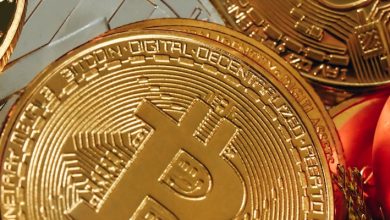Litecoin: The Silver to Bitcoin’s Gold

- Understanding Litecoin and its relationship to Bitcoin
- Comparing the features and benefits of Litecoin and Bitcoin
- Exploring the history and development of Litecoin
- The potential future of Litecoin in the cryptocurrency market
- How Litecoin provides a complementary role to Bitcoin
- Investing in Litecoin: Tips and strategies for success
Understanding Litecoin and its relationship to Bitcoin
Litecoin is often referred to as the “silver to Bitcoin’s gold” due to its similarities with Bitcoin. Both are decentralized cryptocurrencies that use blockchain technology for secure transactions. However, Litecoin has some key differences that set it apart from Bitcoin.
- Litecoin was created by Charlie Lee in 2011 as a “lighter” alternative to Bitcoin, with faster transaction times and lower fees.
- While Bitcoin has a limited supply of 21 million coins, Litecoin has a larger supply cap of 84 million coins, which can potentially make it more accessible and affordable.
- Litecoin also uses a different hashing algorithm called Scrypt, which allows for faster block generation times compared to Bitcoin’s SHA-256 algorithm.
Despite these differences, Litecoin and Bitcoin are often seen as complementary to each other in the cryptocurrency space. Litecoin can be used for smaller transactions or as a testing ground for new features that could eventually be implemented on the Bitcoin network.
Comparing the features and benefits of Litecoin and Bitcoin
When comparing Litecoin and Bitcoin, it is important to consider the features and benefits that each cryptocurrency offers.
Litecoin, often referred to as the “silver to Bitcoin’s gold,” was created in 2011 as a faster and more lightweight alternative to Bitcoin. While both cryptocurrencies operate on similar blockchain technology, there are several key differences between them.
One of the main differences is the transaction speed. Litecoin has a faster block generation time of 2.5 minutes compared to Bitcoin’s 10 minutes. This means that transactions can be confirmed more quickly on the Litecoin network, making it a more efficient option for everyday use.
Another benefit of Litecoin is its increased supply limit of 84 million coins, four times more than Bitcoin’s 21 million. This higher supply limit can help prevent scarcity and potentially make Litecoin more accessible and affordable for users.
Additionally, Litecoin uses a different hashing algorithm called Scrypt, which is designed to be more memory-intensive and ASIC-resistant compared to Bitcoin’s SHA-256 algorithm. This can lead to a more decentralized mining process and potentially reduce the risk of centralization.
Overall, while Bitcoin remains the dominant cryptocurrency in terms of market cap and adoption, Litecoin offers a compelling alternative with its faster transaction speeds, higher supply limit, and unique hashing algorithm. Both cryptocurrencies have their own strengths and weaknesses, so it ultimately comes down to individual preferences and needs when deciding which one to use.
Exploring the history and development of Litecoin
Litecoin, often referred to as the “silver to Bitcoin’s gold,” was created by Charlie Lee in October 2011. Lee, a former Google engineer, designed Litecoin to be a faster and more lightweight alternative to Bitcoin. The cryptocurrency was built upon the same open-source code as Bitcoin, with some key differences that set it apart.
One of the main distinctions of Litecoin is its faster block generation time. While Bitcoin takes around 10 minutes to generate a new block in its blockchain, Litecoin only takes about 2.5 minutes. This means that transactions can be confirmed more quickly on the Litecoin network, making it a more efficient option for everyday use.
Another significant difference is Litecoin’s hashing algorithm. While Bitcoin uses the SHA-256 algorithm, Litecoin utilizes Scrypt. This algorithm is considered to be more memory-intensive, which helps to prevent the centralization of mining power that can occur with Bitcoin.
Over the years, Litecoin has seen steady growth and adoption in the cryptocurrency market. It has established itself as one of the top cryptocurrencies in terms of market capitalization and has gained a loyal following of users who appreciate its speed and efficiency.
In conclusion, Litecoin has played a crucial role in the development of the cryptocurrency industry. Its unique features and strong community support have helped it to carve out a niche for itself in the market. As the digital currency landscape continues to evolve, Litecoin remains a solid option for those looking for a fast and reliable alternative to Bitcoin.
The potential future of Litecoin in the cryptocurrency market
Litecoin has shown promising potential in the cryptocurrency market, positioning itself as the “silver to Bitcoin’s gold”. As a peer-to-peer digital currency, Litecoin offers faster transaction times and lower fees compared to Bitcoin. This has made it an attractive option for users looking to make quick and cost-effective transactions.
One of the key advantages of Litecoin is its active development community, constantly working on improving the technology behind the coin. This ongoing development ensures that Litecoin remains competitive in the ever-evolving cryptocurrency market, adapting to meet the needs of users and investors.
In recent years, Litecoin has gained wider acceptance among merchants and online platforms, further solidifying its position in the market. This increased adoption has led to a growing interest in Litecoin as a viable investment option, with many seeing it as a strong contender in the digital currency space.
Looking ahead, the future of Litecoin in the cryptocurrency market looks promising. With its established reputation, technological advancements, and growing acceptance, Litecoin is well-positioned to continue its growth and potentially carve out an even larger market share. Investors and users alike are keeping a close eye on Litecoin as it continues to make waves in the world of digital currencies.
How Litecoin provides a complementary role to Bitcoin
Litecoin plays a crucial role in the cryptocurrency market by providing a complementary function to Bitcoin. While Bitcoin is often referred to as digital gold due to its status as the first and most well-known cryptocurrency, Litecoin is commonly known as the silver to Bitcoin’s gold.
One of the key ways in which Litecoin complements Bitcoin is through its faster transaction times. Litecoin transactions are processed four times faster than Bitcoin transactions, making it a more efficient option for users who require quick and seamless transactions. This speed advantage makes Litecoin an attractive choice for everyday transactions and micropayments.
Another way in which Litecoin complements Bitcoin is through its mining algorithm. Litecoin uses a different hashing algorithm called Scrypt, which is less complex than Bitcoin’s SHA-256 algorithm. This means that Litecoin mining is more accessible to individual miners with less powerful hardware, creating a more decentralized mining ecosystem compared to Bitcoin.
Furthermore, Litecoin has a larger maximum supply than Bitcoin, with a total of 84 million Litecoins compared to Bitcoin’s 21 million. This higher supply cap ensures that Litecoin can continue to be mined and circulated long after Bitcoin reaches its maximum supply, providing users with a stable and reliable alternative to Bitcoin.
In conclusion, Litecoin serves as a valuable complement to Bitcoin in the cryptocurrency market, offering faster transaction times, a more accessible mining process, and a larger maximum supply. Together, Bitcoin and Litecoin form a powerful duo that caters to a wide range of user needs and preferences in the ever-evolving world of digital currency.
Investing in Litecoin: Tips and strategies for success
When investing in Litecoin, there are several tips and strategies that can help you achieve success in the cryptocurrency market.
One important tip is to diversify your investment portfolio. While Litecoin may be a promising investment, it is always wise to spread your investments across different assets to minimize risk.
Another strategy for success is to stay informed about the latest news and developments in the cryptocurrency space. By staying up-to-date, you can make more informed decisions about when to buy or sell Litecoin.
It is also important to set realistic goals and not to invest more money than you can afford to lose. The cryptocurrency market can be volatile, so it is crucial to approach investing in Litecoin with caution.
Furthermore, consider using dollar-cost averaging as a strategy for investing in Litecoin. By purchasing a fixed amount of Litecoin at regular intervals, you can mitigate the impact of price fluctuations.



